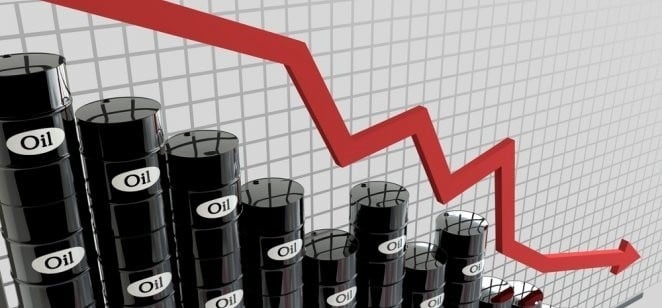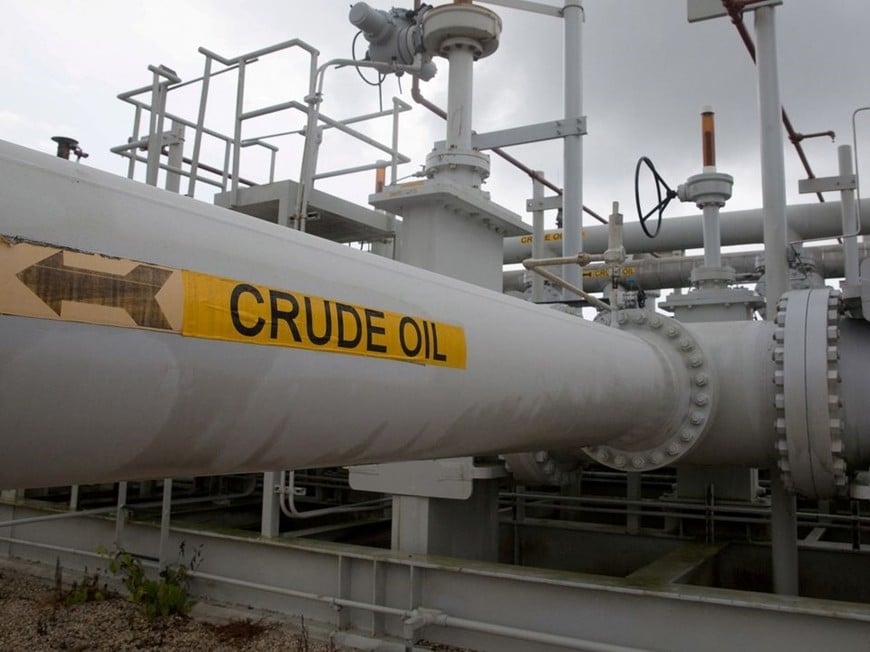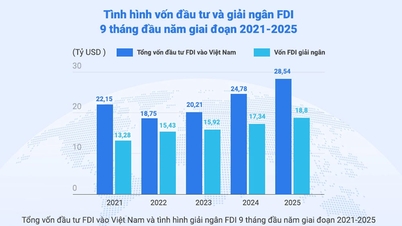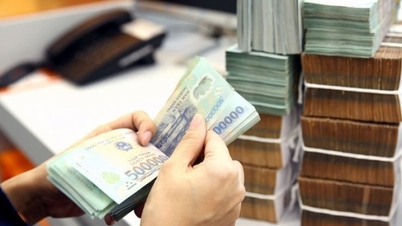World oil prices
According to Oilprice, Brent oil price decreased by 0.95 USD, equivalent to 1.40%, to 67.02 USD/barrel; WTI oil price decreased by 1.08 USD, equivalent to 1.70%, to 62.37 USD/barrel.

Earlier, in the first trading session of the week, both Brent and WTI oil prices lost more than 3%, the sharpest daily decline since August 1.
According to Reuters, OPEC+ may accelerate the pace of increasing oil production in November compared to the 137,000 barrels/day agreed for October at the meeting next Sunday, in order to regain market share in the global market.
Two of the three sources said the eight OPEC+ members could agree to raise production by 274,000 to 411,000 barrels a day, two to three times the increase in October. Another source even stressed that production could increase by as much as 500,000 barrels a day. Bloomberg News previously reported that OPEC+ was considering this possibility.
However, OPEC has denied this information, saying media reports of a plan to increase by 500,000 barrels/day were inaccurate and misleading.
“If OPEC+ really ramps up production, the profit margins of high-cost US shale drillers will shrink significantly, possibly forcing them to cut the record production they have been maintaining for a while,” said analyst Alex Hodes at StoneX Energy.

The market also came under further pressure with Iraq resuming oil exports from the semi-autonomous Kurdistan region via pipeline to Türkiye, after more than two and a half years of suspension.
Iraq's Oil Ministry confirmed that oil flows had officially restarted on September 28, after reaching a temporary agreement to break the deadlock.
The combination of OPEC+'s possible increase in oil production and additional supply from Iraq is putting further pressure on oil prices, according to Andrew Lipow, president of energy consultancy Lipow Oil Associates.
In recent weeks, the oil market has been constantly balancing between two opposing factors: the risk of supply disruption due to the Russia-Ukraine conflict with Ukrainian drone attacks on Russian refineries and concerns about oversupply, combined with weak demand.
In another development, US President Donald Trump has won Israeli Prime Minister Netanyahu's support for a Washington-sponsored peace proposal for Gaza. However, Hamas has yet to give a clear response.
In addition, analysts at ANZ Bank warned that the pessimistic sentiment in the market is also affected by the risk of a US government shutdown, one of the factors that could weaken fuel demand.
According to data from the US Energy Information Administration (EIA), the country's crude oil production hit a new record in July, at 13.64 million barrels per day, up 109,000 barrels per day from the previous record in June. This figure further reinforces the view that the market is facing a supply glut.
Investors are now awaiting the weekly crude oil inventory report from the American Petroleum Institute (API), due later on September 30. Analysts expect crude oil and gasoline inventories to rise, while distillate inventories may fall, Reuters reported.
Domestic gasoline prices
Domestic retail prices of gasoline on October 1, specifically as follows:
| - E5RON92 gasoline: No higher than 19,618 VND/liter - RON95-III gasoline: No higher than VND 20,165/liter - Diesel 0.05S: Not higher than 18,658 VND/liter - Kerosene: Not higher than 18,628 VND/liter - Mazut oil 180CST 3.5S: Not higher than 15,209 VND/kg |
The Ministry of Industry and Trade and the Ministry of Finance decided to adjust the retail price of gasoline from 3 p.m. on September 25. Accordingly, gasoline prices decreased to nearly 20,000 VND/liter, oil prices increased or decreased depending on the type. Specifically, the price of E5RON92 gasoline decreased by 368 VND/liter, RON95-III gasoline decreased by 443 VND/liter, diesel oil decreased by 47 VND/liter, kerosene increased by 84 VND/liter and mazut oil increased by 79 VND/kg.
According to the Ministry of Industry and Trade - Ministry of Finance, the world oil market in this management period is affected by main factors such as: OPEC+ increased oil exports; increased geopolitical tensions in the Middle East; ongoing military conflict between Russia and Ukraine... The above factors have caused world oil prices in recent days to fluctuate up and down depending on each product.
Source: https://baolangson.vn/gia-xang-dau-hom-nay-1-10-tiep-da-giam-5060459.html






![[Photo] Solemn opening of the 1st Government Party Congress](https://vphoto.vietnam.vn/thumb/1200x675/vietnam/resource/IMAGE/2025/10/13/1760337945186_ndo_br_img-0787-jpg.webp)






















![[Photo] General Secretary To Lam attends the opening of the 1st Government Party Congress](https://vphoto.vietnam.vn/thumb/1200x675/vietnam/resource/IMAGE/2025/10/13/1760321055249_ndo_br_cover-9284-jpg.webp)











































































Comment (0)